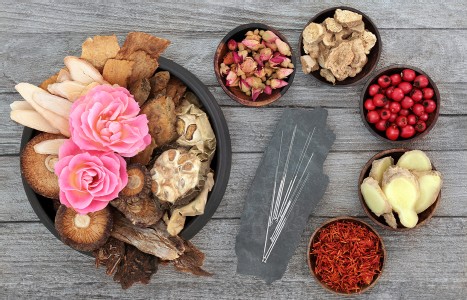Did any of you ever get the feeling in school that it simply was not OK to speak about wanting to be successful? To get into the nitty gritty details of how to make money in practice? Maybe you were even someone like me who was directly told by someone in a position of power that I needed to take what I could get because in private practice, I wouldn’t make money.
Milk Thistle: Safe and Effective Around Chemotherapy?
Milk thistle (Silybum marianum), especially as the concentrated extract containing a defined level of the silymarin complex of flavanolignans, is being increasingly prescribed by herbal clinicians around cancer chemotherapy. It is mainly being used to assist recovery after chemotherapy, for liver protection during chemotherapy and to ameliorate any long-term effects of cancer treatment.1 The aim is to not only improve quality of life, but also to favorably affect treatment outcomes since the patient might be able to better tolerate chemotherapy at the optimum dose.
However, concerns often are expressed in the mainstream medical literature that herbs (especially antioxidant herbs) should not be used in conjunction with chemotherapy because they might compromise cytotoxic effects on cancer cells. Also, there is the added concern for milk thistle that its detoxifying properties might lead to increased clearance of cancer drugs.
A recently-published clinical trial is an encouraging development in this debate. In this double blind, placebo-controlled trial, 50 children (1 to 21 years) with acute lymphoblastic leukemia (ALL) were randomly assigned to receive a proprietary milk thistle extract (Siliphos) or placebo over a period of 28 days during maintenance chemotherapy.2 Chemotherapy is frequently interrupted in the treatment of children with ALL because of liver toxicity, especially during the maintenance phase of treatment. The extract contained only two compounds from the flavanolignan complex, namely silybin A and B (target dose for trial participants 5.1 mg/kg/day), together with soy phosphatidylcholine (to improve bioavailability).
The intravenous chemotherapy drugs administered to the children included vincristine, prednisone, methotrexate and 6-mercaptopurine. No significant differences in frequency of side effects, incidence and severity of toxic reactions, infections or liver parameters were observed at the end of the trial (day 28). However, by day 56, the milk thistle group had a significantly lower AST (p = 0.05) and a trend toward a significantly lower ALT (p = 0.07) compared to baseline. AST in the treatment arm also was significantly different to placebo at day 56 (p = 0.04). Although not significant, chemotherapy doses had to be reduced in 61 percent of the milk thistle group, compared to 72 percent for placebo. These results occurred despite the relatively poor treatment compliance: adherence to milk thistle treatment was just 68 percent, versus 96 percent for placebo (p = 0.02). Younger children exhibited better compliance than teenagers. The concurrent use of milk thistle did not appear to compromise the activity of the chemotherapy drug cocktails.
There is an earlier case study from 1993, where milk thistle extract (800 mg/day) was given to a 34-year-old female patient with acute promyelocytic leukemia.3 Maintenance chemotherapy for this type of leukemia with drugs such as methotrexate and 6-mercaptopurine also leads to potential problems with liver toxicity. The patient was started on such a regime, but therapy was only intermittent due to her elevated liver enzymes. During four months of milk thistle treatment in combination with maintenance chemotherapy, liver enzymes were maintained at normal levels for the first time ever for this patient. From this case study it might be reasonably concluded that high-end doses of a normal (as opposed to a combination with soy phosphatidylcholine) milk thistle extract should also be able to counter chemotherapy toxic effects.
There have been several clinical studies published in the last decade that have sought to understand any potential interaction of milk thistle extract with prescribed drugs. The majority of studies have found no or minimal interaction. Perhaps surprisingly, given that the herb is regarded as a "detoxifying" agent, any significant effects that have been demonstrated generally reflect on decreased, not increased, drug metabolism.
One highly relevant study evaluated the impact of milk thistle on human cytochrome P450 (CYP) activity using various probe drug cocktails.4 Milk thistle extract (350 mg/day standardized to 80 percent silymarin) for 28 days had no impact on CYP1A2, CYP2D6, CYP2E1 and CYP3A4. These CYP enzymes are involved in the metabolism of many common drugs including those used in cancer chemotherapy, CYP3A4 is especially important.
A meta-analysis of three trials involving concurrent use of milk thistle (450 to 525 mg/day of a typical 80 percent silymarin extract for 12 to 28 days) and the anti-HIV drug indinavir found no impact on drug levels.5 Milk thistle (600 mg/day of an 80 percent silymarin extract) for four or 12 days had no impact on the metabolism of the anticancer drug irinotecan in six cancer patients.6 By studying the herb bioavailability and drug metabolites, the authors concluded that silybin concentrations in plasma were too low to significantly affect the function of the phase I enzyme CYP3A4 and the phase II enzyme UGT1A1. They noted that irinotecan is highly susceptible to CYP3A4 inhibition (which silymarin demonstrates in vitro) and concluded that the herbal extract: "poses little risk of interfering with the pharmacokinetic profile of chemotherapeutic agents that are substrates for CYP3A4 and UGT1A1." A similar conclusion (that milk thistle is not a potent CYP3A4 inducer) was reached after a short-term study of the impact of the herbal extract on the calcium channel blocking drug nifedipine in 16 healthy male volunteers.7
Interference with transporter proteins such as P-glycoprotein (P-gp) also can result in significant herb-drug interactions, as is the case for St. John's wort (Hypericum perforatum). In this context, it was found that 900 mg/day of milk thistle extract for 14 days had a small and non-significant impact on digoxin pharmacokinetics in 16 healthy volunteers.8 In contrast, an Indian study found that levels of the antibiotic drug metronidazole were significantly reduced by just 140 mg/day of milk thistle extract for nine days, due to suspected induction of intestinal and perhaps hepatic expression of P-gp and CYP3A4.9 This is the only human herb-drug interaction study for milk thistle that has found reduced drug levels, so clearly this study needs to be repeated. Also induction of P-gp was the proposed mechanism in contrast with other studies that found inhibition of or no effect on this transporter (see immediately below and above).
A few studies have demonstrated increased drug levels. For example, 420 mg/day of milk thistle extract (80 percent silymarin) for 14 days increased levels of the beta-blocker talinolol by around 36 percent.10 Inhibition of P-gp was suggested as a possible mechanism. The same authors also found that milk thistle extract at the same dose appeared to inhibit the metabolism of the hypotensive drug losartan in individuals with a particular CYP2C9 genotype.11 Two other studies have shown reduced clearance of ornidazole12 and sirolimus.13
Hence, the majority of human clinical herb-drug interaction studies show that milk thistle is not likely to interfere with drug metabolism. If it does interact at all, this typically results in increased, not reduced, drug levels. Also, it should be noted that the occasional effects observed on P-gp induction are not likely to impact on levels of intravenously administered drugs. Clearly, the possibility that milk thistle will reduce the efficacy of chemotherapeutic drugs by increasing their clearance from the body is rather unlikely on current evidence. While it might instead result in increased drug levels, such an effect is not likely to be large for the more aggressive doses used during intravenous chemotherapy. However, for added safety, milk thistle extract is probably best used in conjunction with other non-specific antitoxic herbs such as adaptogens.
A final point worth noting is the existence of several in vitro studies that show the silymarin complex potentiates the action of chemotherapeutic drugs on cancer cells. For example, silymarin exerted synergistic effects on the antiproliferative activities of doxorubicin and paclitaxel in both sensitive and (at higher silymarin concentrations) multidrug-resistant (MDR) colon cancer cells.14
Silymarin is a known inhibitor of cellular MDR pumps that confer resistance to toxins and, in the case of bacteria, antibiotics. It also demonstrated antiproliferative activity on its own. Hence, the upside is that milk thistle might not just be a passive bystander during cancer chemotherapy. At the very least, these studies cast doubt on the proposition that the herb will reduce the cytotoxic activity of chemotherapeutic drugs.
References
- Greenlee H, Abascal K, Yarnell E, et al. Integr Cancer Ther, 2007;6(2):158-65.
- Ladas EJ, Kroll DJ, Oberlies NH, et al. Cancer, 2010;116(2):506-13.
- Invernizzi R, Bernuzzi S, Ciani D, et al. Haematologica, 1993;78(5):340-1.
- Gurley BJ, Gardner SF, Hubbard MA, et al. Clin Pharmacol Ther, 2004;76(5):428-40.
- Mills E, Wilson K, Clarke M, et al. Eur J Clin Pharmacol, 2005;61(1):1-7.
- van Erp NPH, Baker SD, Zhao M, et al. Clin Cancer Res, 2005;11(21):7800-6.
- Fuhr U, Beckmann-Knopp S, Jetter A, et al. Planta Med, 2007;73(14):1429-35.
- Gurley BJ, Barone GW, Williams DK, et al. Drug Metab Dispos, 2006;34(1):69-74.
- Rajnarayana K, Reddy MS, Vidyasagar J, et al. Arzneim-Forsch Drug Res, 2004;54(2);109-13.
- Han Y, Guo D, Chen Y, et al. Xenobiotica, 2009;39(09):694-9.
- Han Y, Guo D, Chen Y, et al. Eur J Clin Pharmacol, 2009;65(6):585-91.
- Repalle SS, Yamsani SK, Gannu R, et al. Acta Pharma Sci, 2009;51(1):15-20.
- Jiao Z, Shi XJ, Li ZD, et al. Br J Clin Pharmacol, 2009;68(1):47-60.
- Colombo V, Lupi M, Falcetta F, et al. Cancer Chemother Pharmacol, 2010 Apr 30. [Epub ahead of print.]


